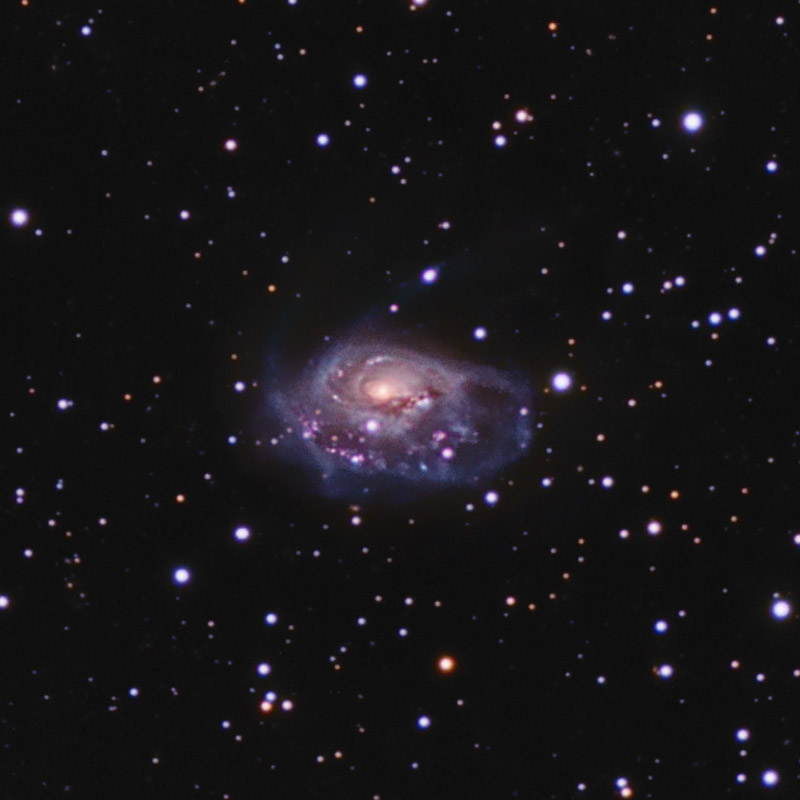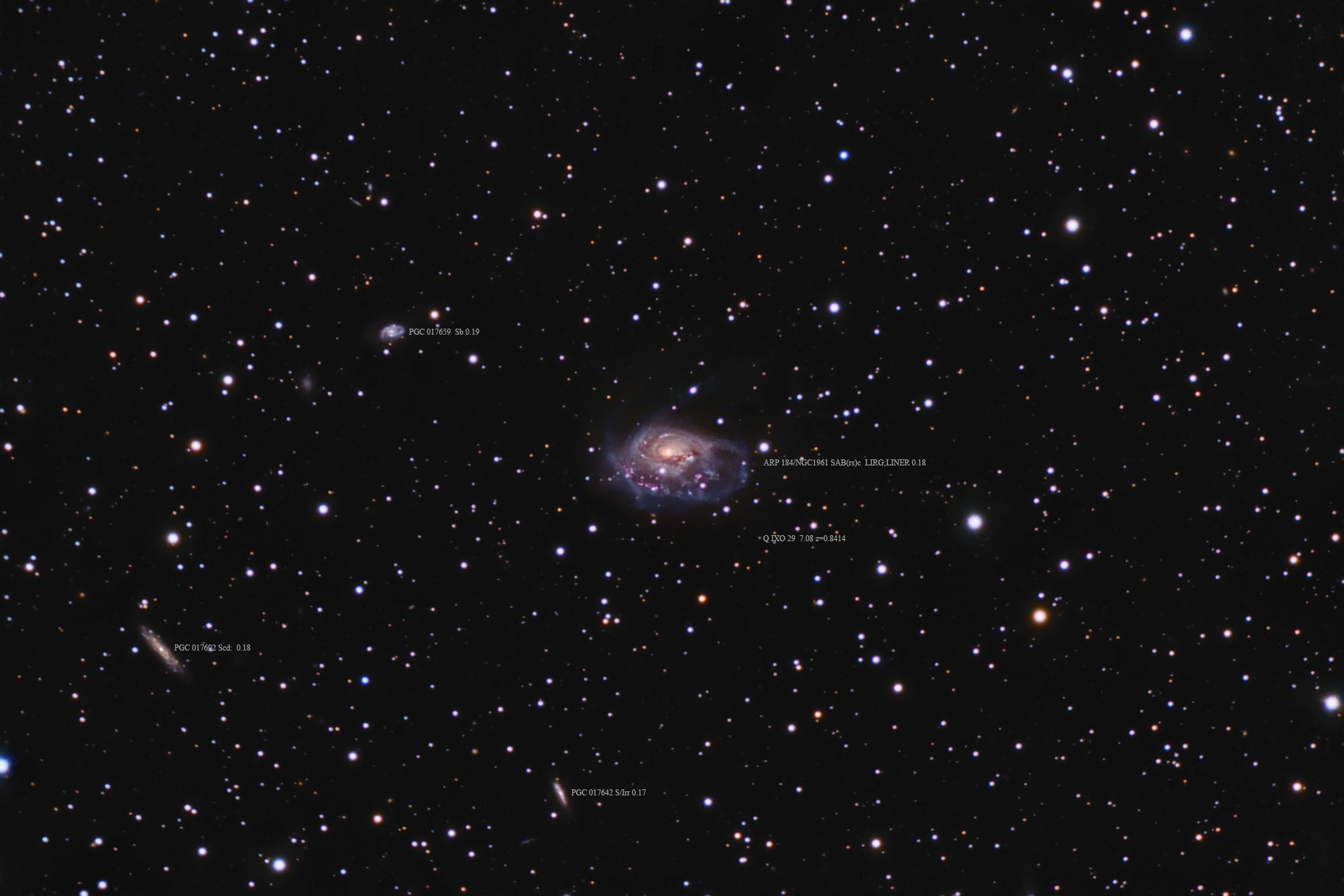| Description | Images |
Object name: ARP184Designation(s): ARP184, NGC1961, This is a reprocessed Arp 184/NGC 1961. Problem is it is at nearly 70 degrees so spends nearly all its time in my Polaris Tree. When I took this data over 2 years ago I had to do so over many nights. Even then trees (pine needles anyway) crept into the image making a mess of the stars and the background. Flats don't compensate for pine needle obstructions! My ability to handle this was limited back then. So I decided to reprocess the image using my improved skills and larger tool set. While I now could deal with the stars and background better there's a loss of resolution due to diffraction effects of all the needles I couldn't eliminate. The trees have continued to grow so doubt I can even do this well again unless I do some trimming. Since they are 100 feet tall that is a bit beyond my ladder's reach and I'm too old to try climbing them. Even a cherry picker can't reach the branches I need to reach. This will have to do. Related Designation(s):1WGA J0542.0+6922, 2MASS J05420464+6922424, 2MASX J05420477+6922421, 6C B053634.9+692058, 87GB 053637.7+692121, 87GB[BWE91] 0536+6921, 8C 0536+693, AKARI J0542038+692245, ARP 184, ARP184, CGCG 0536.6+6921, CGCG 329-008, GB6 J0542+6922, HDCE 0369 NED001, IC 2133, IPC 05366+6921, IRAS 05365+6921, IRAS F05365+6921, KIG 0160:[VOV2007] 013, LDCE 0410 NED001, LGG 132:[G93] 002, LQAC 085+069 002, MCG +12-06-007, NGC 1961, NGC 1961:[RW2000] X-01, NGC1961, NVSS J054204+692234, PGC 017625, UGC 03334, UZC J054204.5+692244, VLSS J0542.1+6922, [VCV2001] J054205.4+692242, [VCV2006] J054205.4+692242, [WB92] 0536+6921, |
Permanent link: https://images.mantrapskies.com/catalog/ARP-GALAXIES/ARP184-NGC1961/ARP184NGC1961L8X10RGB2X10X3R-CROP125.jpg |


